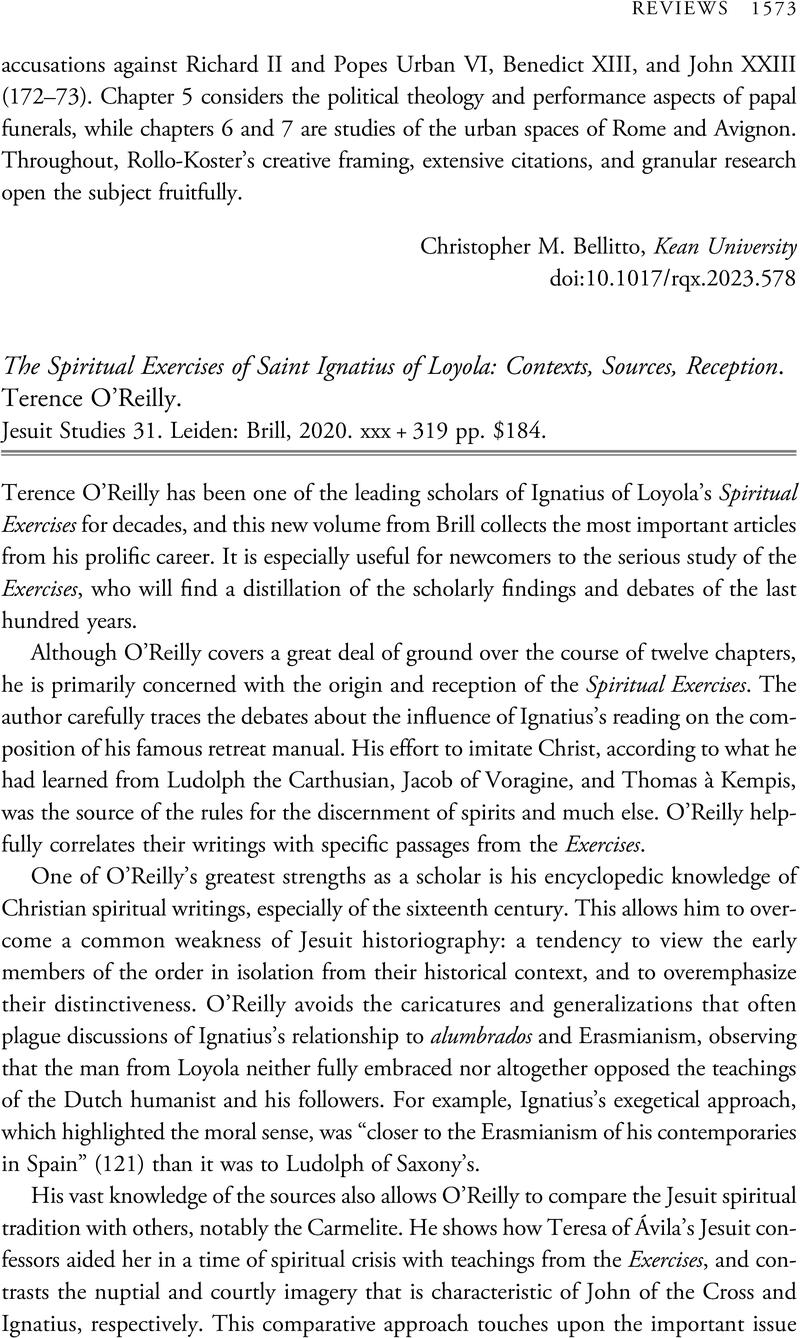No CrossRef data available.
Article contents
The Spiritual Exercises of Saint Ignatius of Loyola: Contexts, Sources, Reception. Terence O'Reilly. Jesuit Studies 31. Leiden: Brill, 2020. xxx + 319 pp. $184.
Review products
The Spiritual Exercises of Saint Ignatius of Loyola: Contexts, Sources, Reception. Terence O'Reilly. Jesuit Studies 31. Leiden: Brill, 2020. xxx + 319 pp. $184.
Published online by Cambridge University Press: 24 January 2024
Abstract
An abstract is not available for this content so a preview has been provided. Please use the Get access link above for information on how to access this content.

- Type
- Review
- Information
- Copyright
- Copyright © The Author(s), 2024. Published by Cambridge University Press on behalf of the Renaissance Society of America



